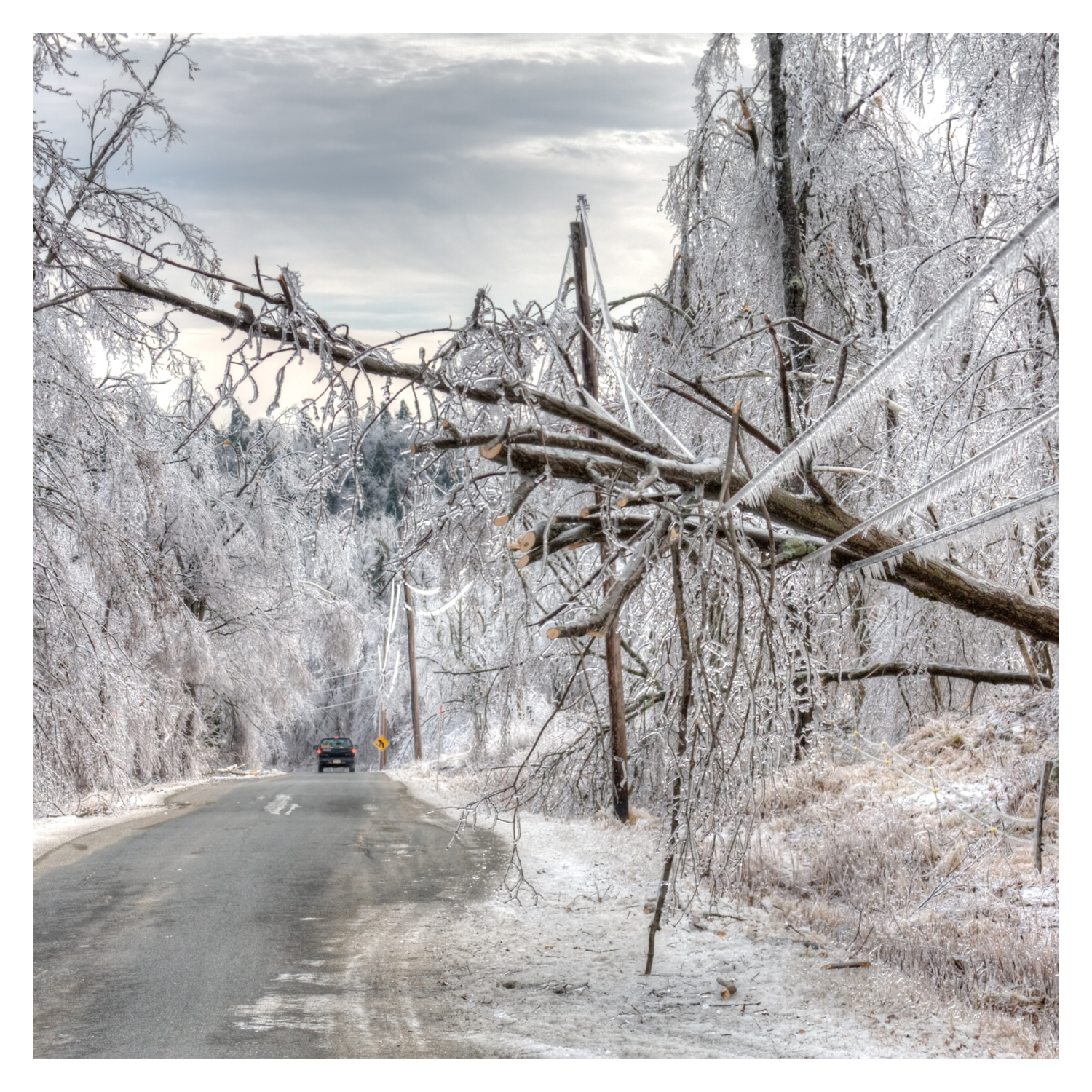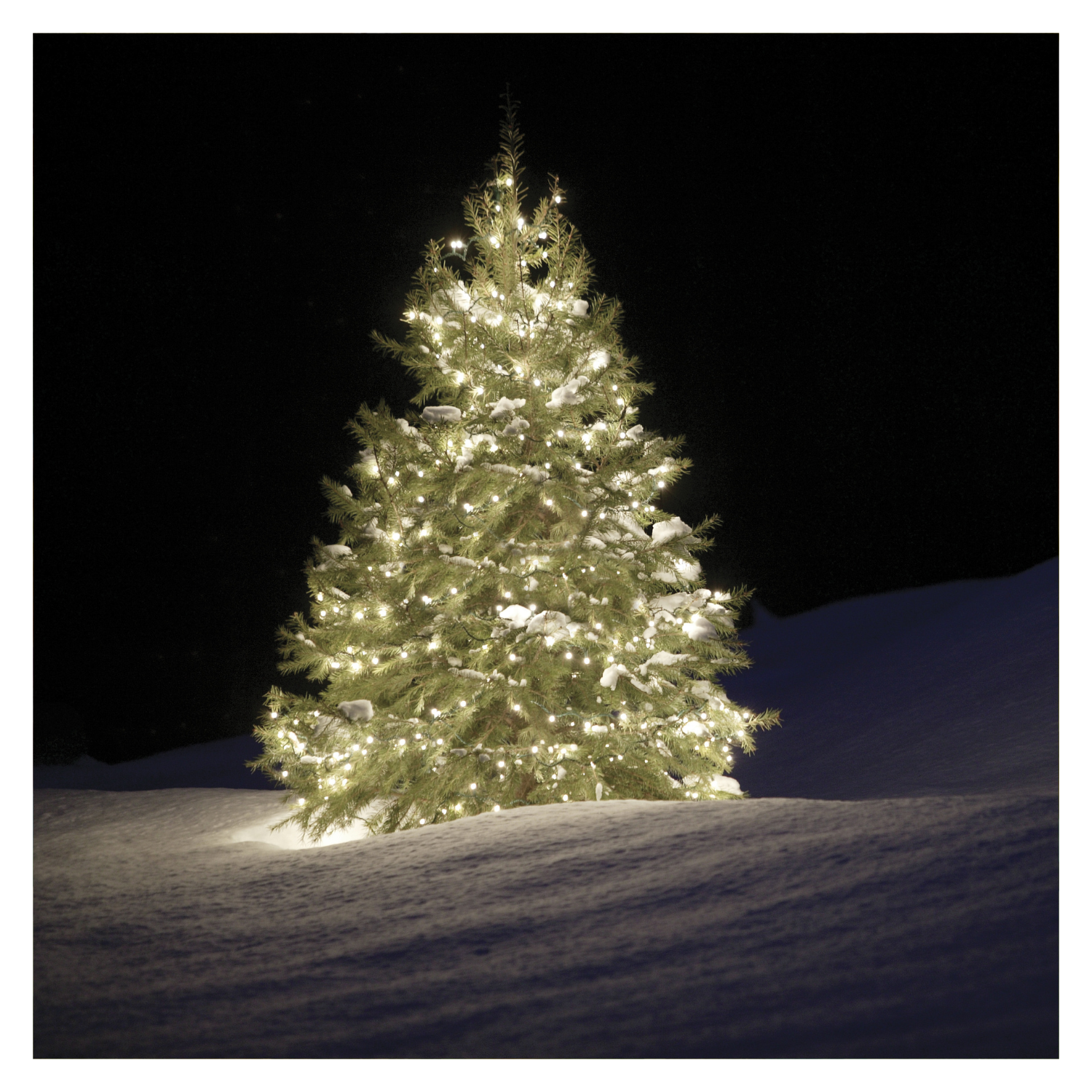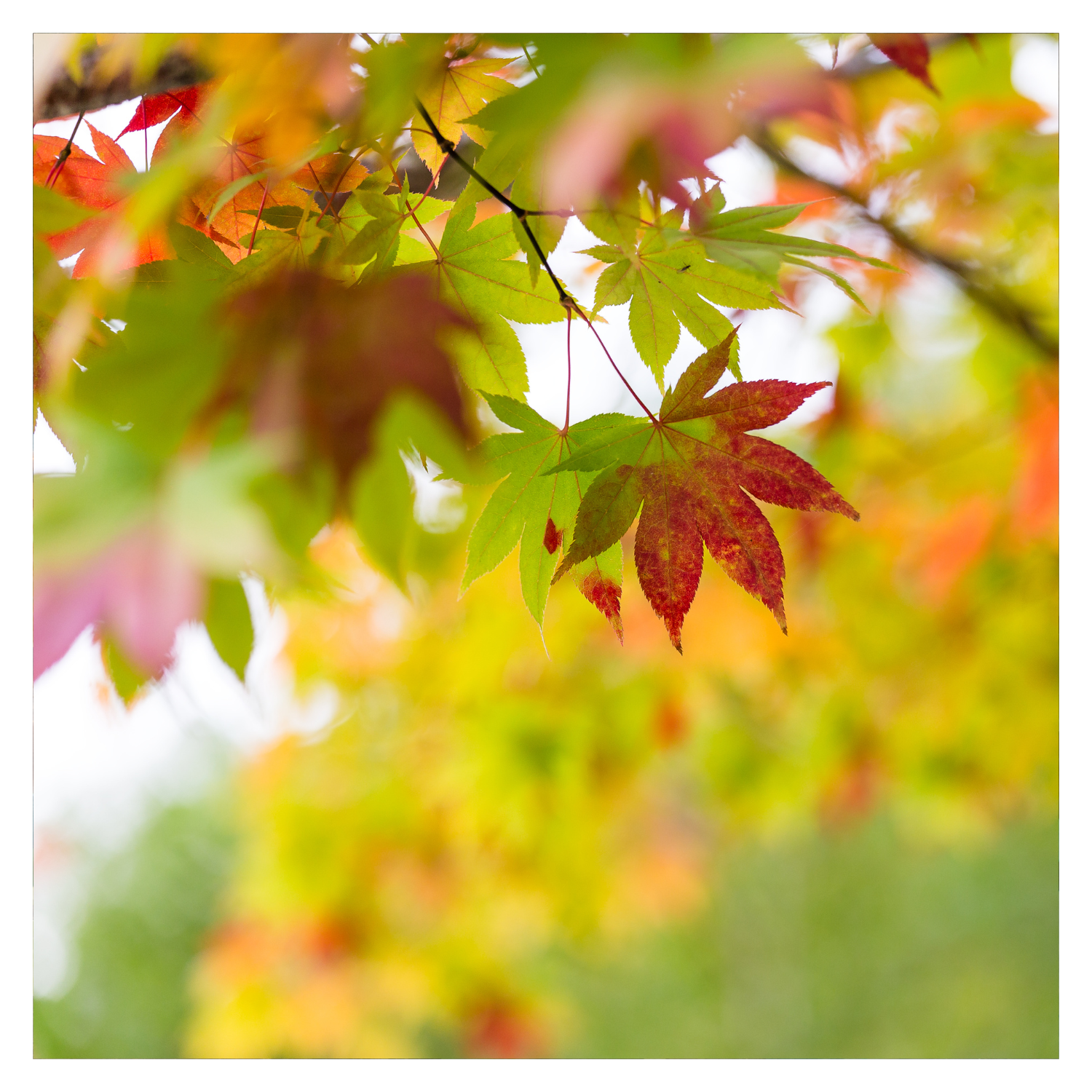Winter's heavy snow and relentless ice can wreak havoc on our cherished landscapes. Winter storms in Sault Ste. Marie, significantly impact the health of trees and shrubs, particularly species like cedars. Broken branches, leaning or fallen trees and splits in your trees happen every winter. While we can’t control the weather, proactive steps taken before and during spring can rejuvenate our trees and shrubs, helping them bounce back from winter's harsh grip.
Immediate Care Steps for Storm-Damaged Trees and Shrubs
- Safety First: Prioritize safety when dealing with damaged trees. Avoid approaching trees near power lines or those with large hanging branches. Damaged, fallen or tangled power lines present a serious threat after a storm. Do not go near them, instead contact the utility company right away to report it. From a safe distance check for broken tree limbs extending over your home, driveway or other structures where people frequent. Serious safety hazards should be addressed immediately by a professional.
- Assess the Damage: It’s recommended to inspect your property after heavy snowfalls or freezing rain events. Inspections near the end of winter are also crucial for making sure that your trees and shrubs are ready for spring growth as structural issues can become more hazardous with the increased weight of spring foliage. Here are some things to look for:
- Hanging or broken branches
- Torn bark or splits in your trees
- Trees, branches or shrubs bent under the heavy weight of snow and ice
- Any signs that a tree is beginning to lean
- Broken or missing leader (the main dominant upright stem or trunk).
- Look for vertical splits in the bark (frost cracks) or areas where the bark appears sunken or discolored (sunscald). These injuries can make trees more susceptible to pests and diseases.
- Remove Heavy Snow: Gently remove heavy snow from branches using a broom, starting from the base and moving upward. Avoid shaking branches, as this can cause breakage. For ice-covered branches, it's best to let the ice melt naturally to prevent further damage.
- Prune Damaged Branches: Remove broken or severely damaged branches to prevent disease and promote healing. Ensure cuts are clean and made at the branch collar. For larger trees or significant damage, consider consulting a certified arborist.
- Avoid Over-Pruning: While it's essential to remove damaged limbs, avoid excessive pruning, which can stress the tree further. Focus on removing only the damaged portions and allow the tree time to recover.
- Monitor and Support: Keep an eye on the affected areas and provide support to weakened branches if necessary. This can include staking young or leaning trees to help them regain stability. It’s important to monitor your plants for new growth in the spring, which indicates recovery. If certain branches or sections fail to leaf out, further pruning may be necessary.
- Repair Techniques for Cracked Branches: Begin by assessing the severity of the damage: minor cracks may heal naturally, while significant splits require immediate attention. For small branches, align the cracked sections and secure them with grafting tape or a strong cord to promote natural healing. Larger branches may necessitate more robust interventions, such as cabling and bracing, to stabilize the damaged area and facilitate recovery. In cases where the damage is extensive and compromises the structural integrity of the tree, it is advisable to consult a certified arborist for professional evaluation and assistance. After implementing repair measures, regular monitoring is crucial to ensure successful healing. Keep an eye on the repaired areas for signs of stress or further damage, and adjust supports as necessary to accommodate the tree's growth and movement
- Broken or Missing Leader
The leader is the main vertical stem at the top of a tree, guiding its upward growth and structural integrity. If this leader is broken, it can impact the tree's form and health. However, with proper intervention, the tree can recover and maintain its longevity.
Potential Impacts:
Structural Integrity: A broken leader may lead to the development of multiple competing stems, resulting in a weaker structure prone to breakage.
Aesthetic Form: The tree's natural shape can be altered, affecting its visual appeal.
Recommended Actions:
- Select a New Leader: Identify the most upright branch near the break to become the new leader.
- Pruning: Cleanly remove the damaged leader just above the selected branch to promote healthy growth.
- Support: If necessary, gently tie the new leader to a stake to encourage vertical growth
- Frost Cracks
Frost cracks are vertical splits in the bark, often resulting from rapid temperature fluctuations causing the wood to contract and expand. To manage frost cracks:
Natural Healing: Trees typically heal these cracks by forming callus tissue around the wound. It's best to allow this natural process without applying sealants or wound dressings, as these do not aid healing and may trap moisture, leading to decay.
Cleaning Ragged Edges: If the bark around the crack is jagged or loose, use a sterilized, sharp knife to trim away the damaged bark, creating a clean edge to facilitate proper healing.
Avoid Fillers: Do not attempt to seal or fill the crack with any materials, as trees need flexibility to survive, and filling the crack can hinder this, potentially leading to further issues.
C. Sunscald
Sunscald, also known as "southwest injury," occurs when the bark warms during sunny winter days and then rapidly cools at night, leading to tissue damage. To address sunscald:
Remove Loose Bark: Gently remove any loose or peeling bark to prevent insects and pathogens from infiltrating the damaged area.
Allow Natural Healing: After cleaning, leave the wound uncovered to enable the tree to heal naturally. Applying wound dressings or sealants is generally not recommended.
- Care Tips for Shrubs: Begin by postponing pruning until spring, allowing new growth to emerge and accurately identify dead or damaged areas that require attention. Once identified, prune these sections back to healthy tissue to encourage robust growth and prevent potential disease. Enhance soil health by applying a 2- to 4-inch layer of mulch around the base of shrubs, ensuring it doesn't touch the stems, to retain moisture, regulate temperature, and suppress weeds. After the threat of frost has passed, consider fertilizing with a balanced, slow-release fertilizer suitable for the specific shrub species to replenish nutrients depleted during winter. Ensure shrubs receive adequate moisture, especially during dry periods, by deep watering to promote healthy root development and aid in recovery from winter stress. Be vigilant for signs of pests or diseases, as stressed plants are more susceptible; early detection allows for prompt management and prevents further decline.
Special Considerations for Cedars
Cedars are particularly susceptible to winter damage due to their evergreen nature and structural characteristics. Here are specific steps to care for cedars before and after a harsh winter:
- Preventing Branch Splaying: Cedars are prone to branches splaying under heavy snow. To prevent this, wrap them with burlap or use twine to secure branches, ensuring it's done before heavy snowfall. This helps maintain their upright form and prevents structural damage.
- Hydration Before Winter: Ensure cedars are well-watered before the ground freezes, as hydrated trees are more resilient to cold stress. Proper watering helps prevent winter burn and desiccation.
- Pruning Timing: Schedule pruning during the dormant season, typically late winter, to minimize stress and promote healthy growth. Avoid pruning in late fall, as this can stimulate new growth susceptible to winter damage.
- Frost Protection: For young or newly planted cedars, consider using burlap wraps or windbreaks to protect them from harsh winter winds and frost. Implement these protective measures after the ground is frozen but before the first snowfall. For wraps material must be breathable and not wrapped too tightly to allow for air flow and prevention of mold and mildew. Remove wraps in early spring for the best results.
- Regular Maintenance: Maintain a regular pruning schedule to remove weak or dead branches, reducing the risk of snow and ice accumulation causing breakage. Remove heavy snow after it occurs and monitor your cedars closely during a storm to gage their ability to handle the snow load.
Salt Damage to Trees and Shrubs Near Roadways
In regions like Sault Ste. Marie, where road salt is commonly used during winter months, trees and shrubs located near roadways are at increased risk of salt damage. Understanding the causes, symptoms, and preventive measures is essential for maintaining plant health.
Causes of Salt Damage
Salt can harm plants through two primary pathways:
- Salt Spray: Vehicles traveling on salted roads can create airborne salt particles that settle on nearby vegetation. This salt spray can penetrate leaf scars and kill dormant buds.
- Soil Accumulation: Salt from roadways dissolves in melting snow and infiltrates the soil, where it dissociates into sodium and chloride ions. These ions can be absorbed by plant roots, leading to physiological stress
Symptoms of Salt Damage
Signs of salt damage often become apparent in the spring and include:
- For Conifers: Yellowing or browning of needles, particularly on the side facing the road. Overtime trees will start to drop needles and branches will become bare.
- For Deciduous Trees: Delayed bud break, twig dieback, sparse or stunted foliage, and leaf scorch.
To mitigate salt damage to trees and shrubs near roadways, consider the following strategies:
1. Reduce Soil Sodium Content
- Leach Salts with Fresh Water: Applying ample fresh water can help flush sodium ions deeper into the soil, reducing their concentration in the root zone. For instance, applying 6 inches of water can decrease soil salinity by approximately 50%, while 12 inches can achieve an 80% reduction.
- Incorporate Soil Amendments: Adding organic matter, such as compost, can improve soil structure and enhance its ability to leach salts.
2. Rinse Salt from Foliage
- Wash Off Salt Residue: Once temperatures rise above freezing, gently rinsing evergreen foliage with fresh water can remove salt deposits, preventing leaf burn and dehydration.
3. Enhance Soil Structure and Drainage
- Prevent Soil Compaction: Compacted soils hinder water movement, exacerbating salt accumulation. Regularly incorporating organic matter, such as compost, can improve soil aeration and drainage, facilitating the leaching of salts.
4. Avoid Planting in High-Risk Areas
- Strategic Landscaping: In areas prone to heavy salt exposure from roadways or sidewalks, consider using hardscaping elements like rocks, gravel, or mulch instead of planting sensitive vegetation. This approach minimizes the risk of salt damage.
- Selective Planting: Avoid placing trees and shrubs in zones where salt-laden snow is frequently piled by snow removal equipment. Opt for salt-tolerant species in areas where exposure is unavoidable.
Winter can be tough on your trees and shrubs, but with the right care and proactive measures, your landscape can recover and thrive come spring. By assessing damage, removing hazards, and providing proper support, you can help your trees and shrubs regain their strength after harsh weather. Preventative strategies, such as wrapping vulnerable plants, pruning at the right time, and mitigating salt damage, will also go a long way in reducing winter stress. As the seasons change, continue monitoring for new growth and signs of recovery. With a little attention and care, your landscape will bounce back, ensuring a healthy and beautiful yard for years to come.




